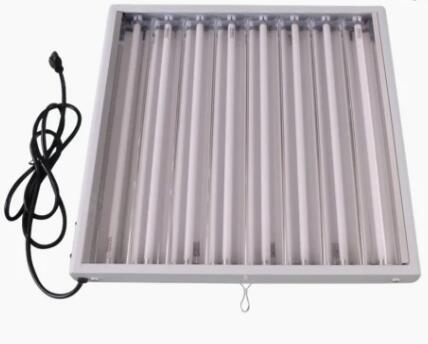The Science Behind LED Grow Lights and Their Superior Light Intensity Control
2024-09-07
As indoor gardening continues to grow in popularity, the technology behind grow lights has advanced to keep pace. Traditional lighting systems like high-pressure sodium (HPS) or fluorescent lights, while effective, have limitations when it comes to controlling light intensity. LED grow lights, on the other hand, provide far greater flexibility and precision. In this blog, we explore the science behind how LED grow lights allow for better control of light intensity and why they are rapidly becoming the preferred choice for indoor growers.
1. Precise Voltage Control and Dimmability
At the heart of an LED light is a semiconductor that emits light when voltage is applied. Unlike traditional light bulbs that either glow fully or not at all, the voltage applied to LEDs can be precisely controlled to adjust the brightness. This precise voltage control enables LED grow lights to be dimmed and fine-tuned for specific light intensities.
- Dimmable Features for Different Growth Stages: The ability to dim LED grow lights allows for a smooth transition between growth stages, from germination to flowering. Lower intensity is ideal for early growth, while higher intensity stimulates flowering and fruiting.
- No Deterioration in Quality: Traditional lights may degrade in quality when dimmed, affecting light spectrum or color temperature. LED grow lights maintain their spectrum quality, regardless of intensity, ensuring plants get the exact light wavelengths they need.
2. Heat Management for Stable Light Output
One of the challenges with traditional lighting systems is managing heat. HPS and fluorescent lights produce a significant amount of heat, which can interfere with maintaining optimal light intensity for plants.
- Cool Operation of LEDs: LED grow lights generate far less heat than their traditional counterparts. This cool operation allows growers to place the lights closer to the plants without the risk of burning them. As a result, plants receive more light without being exposed to excessive heat.
- Consistent Intensity Without Heat Damage: By minimizing heat, LED grow lights can maintain a consistent level of light intensity over longer periods, ensuring a stable environment for plant growth.
3. Modular Design and Flexibility
LED grow lights are designed to offer greater flexibility in terms of how light intensity is distributed. Traditional grow lights often lack modular control, meaning that growers must rely on a fixed output. LEDs, however, can be arranged in modular panels, allowing growers to customize the light intensity based on plant needs.
- Individual Control Over Light Zones: Many LED grow lights come with the option to control specific zones within the lighting array. This allows growers to increase or decrease light intensity in particular areas of their grow space, targeting plants with different light requirements.
- Gradual Intensity Adjustments: Growers can program LED systems to gradually increase or decrease light intensity to mimic natural sunlight cycles. This feature helps reduce plant stress and improve growth efficiency.
4. Energy Efficiency and Cost Savings
While controlling light intensity is critical for plant health, it also plays a significant role in energy efficiency. Traditional lighting systems often waste energy by emitting light at a constant, unchangeable intensity, even when plants don’t need it.
- Targeted Energy Use: LED grow lights allow growers to match light intensity to the exact needs of their plants, reducing wasted energy. By adjusting the intensity, growers can cut down on electricity consumption while ensuring their plants receive the right amount of light.
- Longer Lifespan, Less Maintenance: LEDs also last much longer than traditional lights, reducing the need for frequent replacements. Their efficiency combined with their long lifespan makes LED grow lights a cost-effective solution for indoor farming.
5. Optimizing Plant Photosynthesis
Another advantage of controlling light intensity with LEDs is the ability to optimize the light spectrum for plant photosynthesis. Traditional lights often emit light across a broad and sometimes inefficient spectrum.
- Targeting Photosynthetically Active Radiation (PAR): LED grow lights can be designed to emit light only in the wavelengths that plants use for photosynthesis—primarily red and blue light. This means the intensity of light is concentrated in the most beneficial range for plant growth, leading to healthier, more productive plants.
- Adjusting Spectrum and Intensity Simultaneously: Unlike traditional systems, LED grow lights can adjust both the intensity and spectrum simultaneously. This allows growers to modify not only the brightness but also the quality of the light to support different plant growth phases.
Conclusion
LED grow lights offer a sophisticated level of control over light intensity that traditional lighting systems can’t match. With dimmable features, improved heat management, modular design, and energy efficiency, LED lights allow growers to optimize conditions for plant growth at every stage. By switching to LEDs, indoor farmers can expect better yields, lower energy costs, and a more tailored growing environment for their plants.



